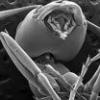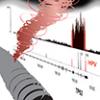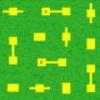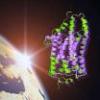Klaus Schulten, Ph.D., the Swanlund Professor of Physics at the University of Illinois at Urbana-Champaign, delivered the 2014 Pitzer Lecture in Theoretical Chemistry at 4 p.m., Monday, Oct. 27, in Room 2015 of McPherson Laboratory, 140 W. 18th Ave., on the main campus of The Ohio State University.
Press Releases
Primary tabs
The U.S. Department of Energy recently awarded Engineering Mechanics Corporation of Columbus (Emc2) and its partners $1 million to develop a cloud-based tool that will simulate welding processes employed in the manufacture of metallic products. The funding gives added momentum to AweSim, a public-private, Ohio-based initiative to boost industrial use of modeling and simulation.
Fifteen middle school girls from around the state are studying the biological systems of Big Darby Creek and then are leveraging powerful technology to compare their findings with federal environmental data to determine the human impacts.
The group of 16 talented high school students attending the Ohio Supercomputer Center’s Summer Institute will be presenting their research tomorrow evening (June 20) and joining with alumni to celebrate the 25th anniversary of this high-tech, fast-paced summer experience.
A recent study into the biomechanics of the necks of ants – a common insect that can amazingly lift objects many times heavier than its own body – might unlock one of nature’s little mysteries and, quite possibly, open the door to advancements in robotic engineering.
The U.S. Department of Energy has awarded AltaSim Technologies nearly $150,000 to further develop the technologies that drive additive manufacturing – adding momentum to an public-private initiative based in Ohio to boost industrial use of modeling and simulation.
It’s long been known that certain strains of human papillomavirus (HPV) cause cancer. Now, researchers at The Ohio State University have determined a new way that HPV might spark cancer development – by disrupting the human DNA sequence with repeating loops when the virus is inserted into host-cell DNA as it replicates.
A forest in South Carolina, a supercomputer in Ohio and some glow-in-the-dark yarn have helped a team of field ecologists conclude that woodland corridors connecting patches of endangered plants not only increase dispersal of seeds from one patch to another, but also create wind conditions that can spread the seeds for much longer distances.
Researchers have found that the melanopsin pigment in the eye is potentially more sensitive to light than its more famous counterpart, rhodopsin, the pigment that allows for night vision.
From 2000 to 2010, about 1,900 cyclones churned across the top of the world each year, leaving warm water and air in their wakes – and melting sea ice in the Arctic Ocean.
That’s about 40 percent more of these Arctic storms than previously thought, according to a new study of vast troves of weather data that previously were synthesized at the Ohio Supercomputer Center (OSC).









